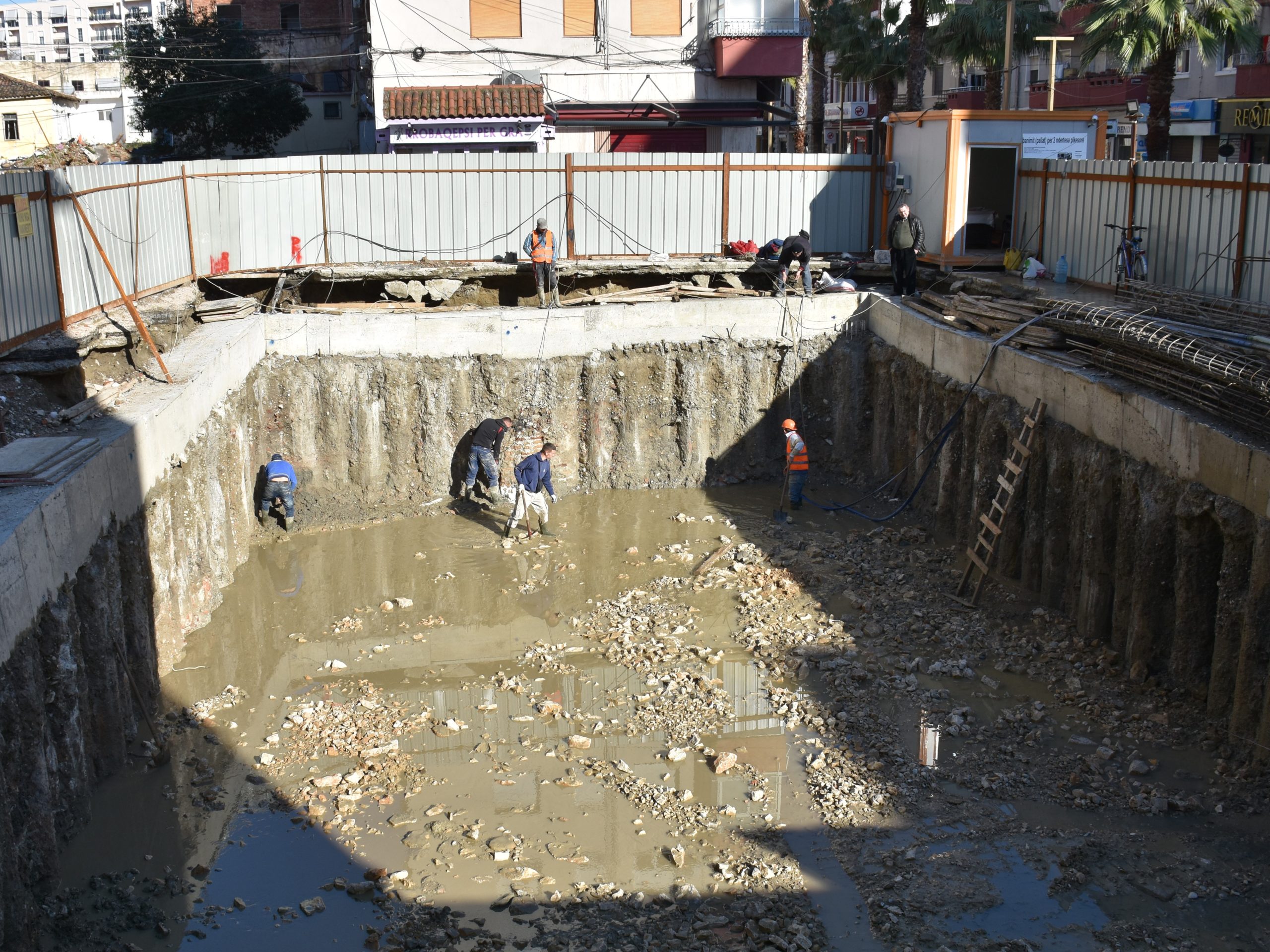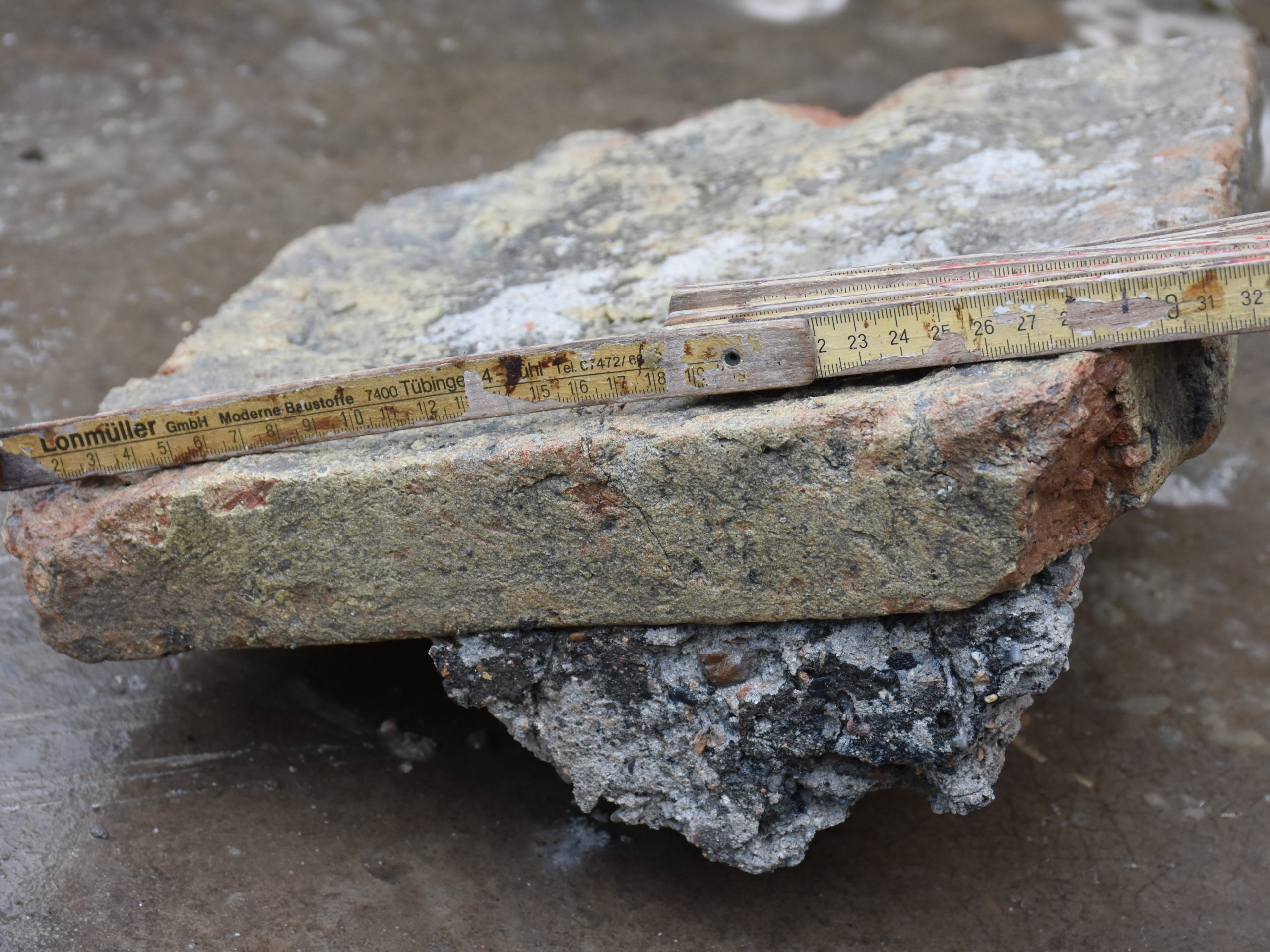In Rebuilding after an Earthquake, Albania is Destroying Archaeological Treasures

In the rush to rebuild after a devastating 2019 earthquake, Albania is failing to enlist the help of archaeologists, causing irrevocable damage to the archaeological riches of the coastal city of Durres.
Autor: Geri Emiri | BIRN | Durrës
On January 11 this year, the hammering of a pneumatic drill rang out behind fences on Dyrrah Boulevard that runs through the Albanian coastal town of Durres, one of the oldest cities in Albania and known in ancient times as Dyrrah.
Workmen were preparing the foundations of a six-storey building to replace another that had been toppled by an earthquake in November 2019, drilling away at a wall that had survived underground for two millennia but would not survive the earthquake reconstruction work financed by the Albanian government.
“Clearly there are archaeological remains at three sides of the foundation, on the western, eastern and northern sides,” local archaeologist Brikena Shkodra told BIRN after viewing photos of the site taken by this reporter.
“At the western side there is an arch created by bricks and mortar while at its side there is a stretch of a wall,” Shkodra said.
The city of Durres dates to the 6th century BC. In 2004, not far from the construction site on Dyrrah Boulevard, archaeologists discovered a sculpture of Gaea, goddess of the Earth in Greek mythology. Experts fear the now-destroyed archaeological site on Dyrrah Boulevard may have been a religious object or an important public building, possibly even an imperial palace from the 6th Century AD.
While Albanian law requires that construction in such archeologically rich areas be monitored by professional archaeologists, BIRN has discovered that in this case no such monitoring was carried out. And it’s not the only one in a town that bore the brunt of the 6.4-magnitude quake in 2019.
Archaeologists not commissioned

The 2019 quake killed 51 people and left hundreds of families homeless. But it was not the first to strike Durres, which in its long history has been repeatedly destroyed by earthquakes and rebuilt over the ruins. Beneath the current city sit the remains and riches of ancient Greek, Roman and Ottoman-era buildings.
The law requires that redevelopment work be monitored by Albania’s Institute of Archaeology or by private, licenced archaeologists.
The apartment block at No 14, Dyrrah Boulevard, was built in the 1980s as communal housing but was classified as uninhabitable following the 2019 earthquake and torn down.
In June last year, the Institute of Archaeology wrote to the Ministry of Culture and the Municipality of Durres to highlight the archaeological potential of the site, citing previous studies that had found traces of two ancient buildings in the area, according to information obtained via a Freedom of Information request.
The Institute asked for permission to conduct a dig, but received no reply.
“There was plenty of time to carry out the archaeological research,” said Shkodra, who is employed at the Institute of Archaeology. “The construction work didn’t start until January 2021, so there were months available for the research.”
Double standards
The Albanian Development Fund, a state agency, is expected to commence construction work on 780 family homes and 269 apartment blocks, all destroyed by the earthquake. The Fund is also the contracting authority in the reconstruction of 30 schools and other educational objects. One of these is the ‘Shaqe Mazreku’ elementary school in the center of Durres. Back in 2004, during the construction of a nearby apartment block, archaeological remains were uncovered, including elements of monumental buildings, a Byzantine tower and fragments of a black and white mosaic. Albania Prime Minister Edi Rama inspected the building work on the school on July 11, 2020. Video showed that the construction had reached the second floor, yet an agreement between the Albanian Development Fund and the Institute of Archaeology for the monitoring of the site was signed only a few days later. The situation is a little different on reconstruction projects financed through European Union grants and implemented by the United Nations Development Program, UNDP. BIRN looked at eight such projects, all educational objects, and found that in every case the UNDP had contracted archaeologists to investigate the sites and monitor the work. In a letter dated October 29, 2020, Albania’s National Council for Cultural Material Heritage instructed the Albanian Development Fund – a state agency that finances part of the earthquake reconstruction work – to contract the Institute of Archaeology and the National Institute for Cultural Heritage, NICH, to carry out the monitoring.
In a letter dated October 29, 2020, Albania’s National Council for Cultural Material Heritage instructed the Albanian Development Fund – a state agency that finances part of the earthquake reconstruction work – to contract the Institute of Archaeology and the National Institute for Cultural Heritage, NICH, to carry out the monitoring.
Four days later, the municipality issued the construction permit, but the work got underway without any archaeological monitoring, despite the area being classified a Class A archaeological zone.
The Institute of Archaeology told BIRN that it had not been contracted by the Fund, as is required by law. The NICH did not explain why it failed to stop the construction work.
“Currently there is no contract signed and so our specialists cannot carry out observation, which can be done only based on a contract,” the NICH said in a written response to BIRN.
The Inspectorate for the Protection of Territory in Durres Municipality said it was unable to intervene because the construction had valid permits.
It also confirmed that the National Council for Cultural Material Heritage had instructed the Fund to engage the Institute of Archaeology in the archaeological monitoring, but did not explain why no contract was signed.
For its part, the Albanian Development Fund said the construction did not require any archaeological permission since “the new building will be within the footprint of the previous and will go no deeper than its foundations.”
‘Very important monument’ destroyed

At dusk on January 10, a truck filled with earth dug from the site of No 14 Dyrrah Boulevard pulled out of the construction site and drove to another site, just behind the police station.
A security guard, cigarette between his lips, closed the gate and walked over what appeared to be Roman bricks.
“The size of the bricks and their thickness are very similar with those found at a 14th century monument known as the Roman Public Baths,” said Shkodra on viewing video made by this reporter.
As the Albanian Development Fund noted, the project for the reconstruction of No 14 stated that the new building would have foundations of the same volume and depth as the previous building. But the diggers must have gone deeper given that the archaeological remains were destroyed.
“The monument had been damaged also by the previous apartment block but not much, because its foundations didn’t go very deep,” Shkodra said.
“However, now that the digging had gone deeper, we have a clear picture of the arcades, which apparently go another metre below the current level,” she told BIRN.
Both Shkodra and fellow Mikel Nushi, an architect, said that, while the previous building had plinth foundations, meaning the digging was limited only to the area of the plinth and not under the whole building, the new construction had plate foundations.
“The whole area under the building is filled with a thick concrete plate and that is very different from the previous one,” Nushi said.
The damage is immeasurable.
“I can absolutely confirm that these are structural remains of a very important monument, possibly a public building with bricks and mortar, such was characteristic of fourth to fifth century AD constructions,” Shkodra said.
The investor, she said, “could hardly have failed to see that the digging had uncovered monumental structures. Even non-archaeologists can see that. It is absolutely irresponsible.”
__________
Photo on head: After the excavation of the archeological structures, the workers of the construction company broke their last traces with pickaxes and batons. Photo by Geri Emiri
NOTE: This article was published by the author on May 7, 2021 in the media Reporter.al and is being republished here in accordance with the “new publishing policies” of BIRN Albania. This article was also published by Balkan Insight on May 13, 2021.


